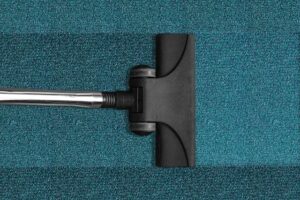Can I Dry Carpet Padding on My Own?
 The aftermath of a flood is not a very pretty sight – you’re left staring at puddles and washed-out carpets, wondering if you can take care of this mess on your own.
The aftermath of a flood is not a very pretty sight – you’re left staring at puddles and washed-out carpets, wondering if you can take care of this mess on your own.
The long and short of it is…yes, you can – if you know what you’re doing. Most people don’t have the skills or tools to remove carpet padding without damaging it or, worse, hurting themselves. Moreover, most carpet installations are secured with nails and bolts, so you’ve got your work cut out for you.
It’s worth noting that wet porous objects, like carpets and pads, start developing health hazards like mold in under 24 hours. Whether you take the DIY route or hire a professional 911 Restoration of South Dallas, you don’t have time to wait. Better act fast.
For a DIY technique on drying carpet pads on your own, refer to the following steps.
Quick List of Items You’ll Need
- Box fans and dehumidifier
- Dry-wet vacuum
- Safety gear (gloves, goggles, and mask)
- Carpet pullers
- Towels or rags
- Disinfectant
- Baking Soda
Create a Flow of Air in the Room
Before any water remediation work can start, you’ll have to prevent the spread of mold spores. Place the box fans to create a stream of air around the carpet. If the weather permits, open up the windows so that air can circulate. The box fans will push out the unhealthy air and draw in fresh air from outside.
Now you can start clearing out the water from your carpet and its padding.
Removing the Carpet
You can remove all of the carpet or certain sections you suspect are moist and wet. This is a judgment call you’ll have to make – but it should be accurate. A professional water damage restoration specialist in South Dallas will usually bring out water sensors to make this decision.
The procedure for drying carpet pads is more complicated and drawn out than it is for carpets. This is because even if the pad appears to be dry, it is probably full of water and is retaining all that moisture like a sponge. So you’ll have to remove the carpet itself to start the drying process.
Wear your safety gear and carpet pullers in hand, carefully pull the top layer of the carpet. You’ll have to use needle-nose pliers if the product was secured using staples. Now carefully roll the top layer up from its space.
Experts agree that you should place the carpet under sunlight to kill off any harmful bacteria and spores.
Drying the Carpet Padding
Now that the carpet padding is exposed, you can test how much water is absorbed by stepping over it. The water will rapidly pool to the surface and collect around your footwear if the padding is soaked.
Time to bring in the wet vac unit.
Caution: Plug the wet vac in an outlet that is far removed from signs of water damage to prevent a fire hazard!
Use the wet vac to remove as much water from the carpet padding as possible.
Pro tip: Avoid pressing the padding with the hose because it could damage the material.
Creating Air Circulation
Now that you’ve removed as much moisture content from the carpet padding as possible, pour a thin layer of baking soda over the surface.
Place the box fans over the moist padding and the carpet padding. Careful not to blow the fan directly over the layer of baking soda, or you’ll have to start the process all over again. After a few hours, the baking soda will absorb the moisture (and the nasty odor) for good without any chance of it leaking back.
Quickly test the padding to see if the water still rises. If any liquid surfaces, repeat the above steps until the water no longer rises.
Clean the Underwood
Before you install the carpet in its place, make sure the subfloor is dry; otherwise, it will become a breeding ground for mold and foul odor. Use a towel or rag to dry the subfloor. Bring in the box fans to circulate a fresh stream of air over the surface.
Once the subfloor has properly dried, use a disinfectant to sterilize the surface. Finalize everything by a quick wipe. Also, make sure to remember to apply a disinfectant on the carpet’s underside as well.
This will prevent any mold spores from growing out of control.
Sterilize the Carpet Pad
Now that the moisture has evaporated, it’s time to deal with any contaminants on the surface of the padding. Spread a thin layer of disinfectant over the surface to let it dry.
You can also use heat treatment with a steam cleaner to ward off bacteria and viruses still on the padding.
Now that the padding has been completely sanitized and dried, it’s time to reinstall the carpet over it once it’s ready.
Will the Padding Dry on its Own?
Unlike the carpet, the padding most probably won’t dry on its own (especially its underside) because all contact with the outside air is blocked – you can thank the carpet for that. Moreover, it’s not recommended to let carpets and paddings dry on their own because mold will spread around your house.
In any case, we recommend calling a professional to assess the extent of damage with a keen eye. If the drying process is proving to be too tough, call your local 911 Restoration team for professional water damage remediation in South Dallas.



